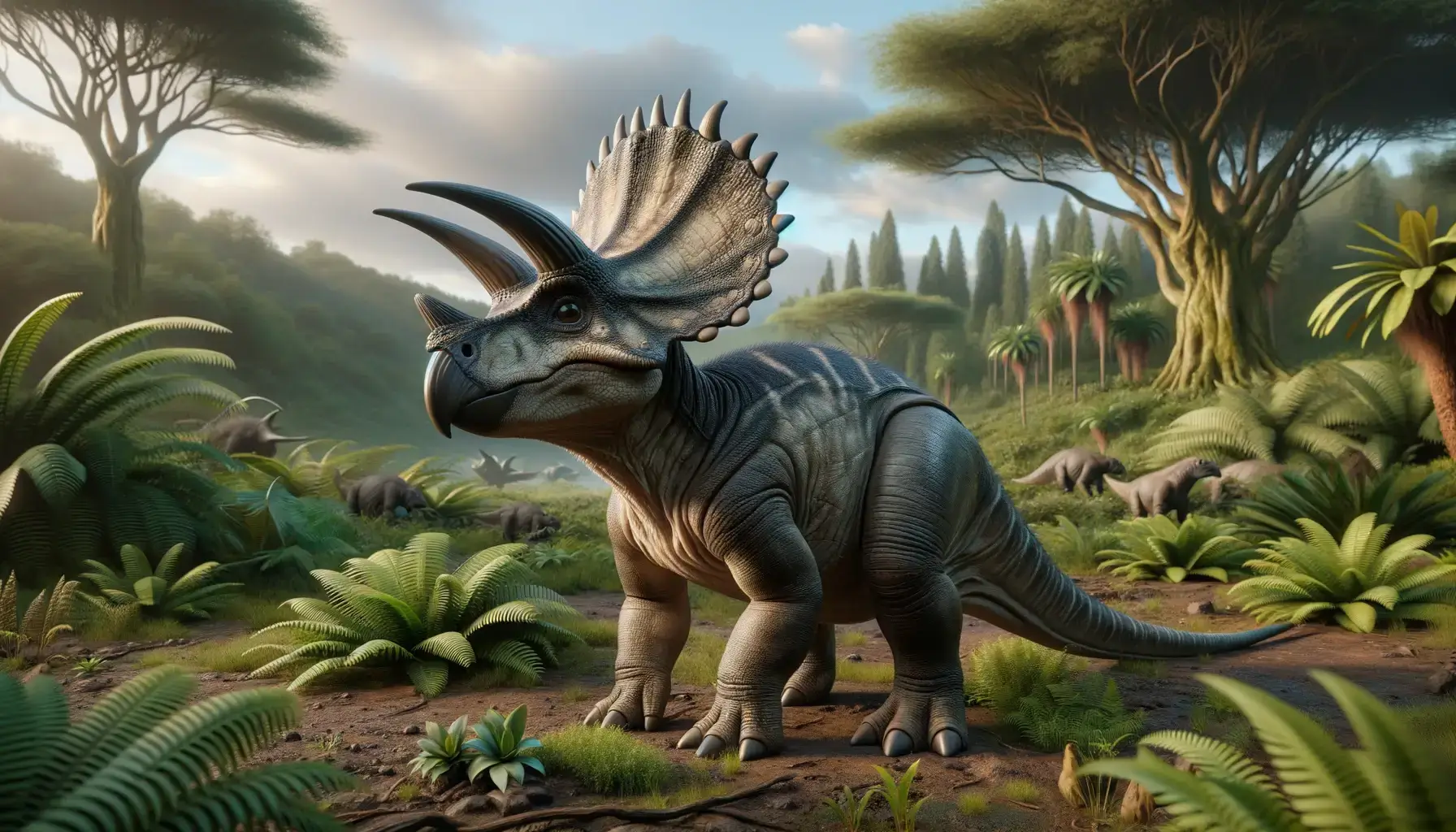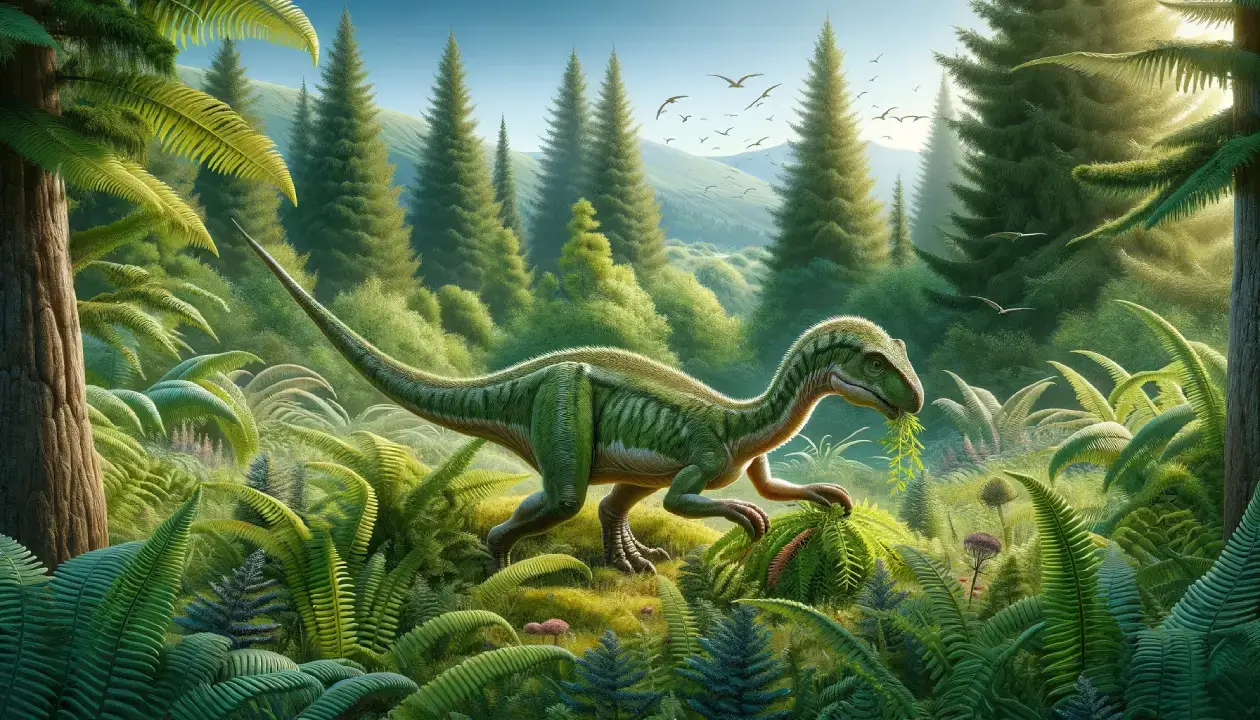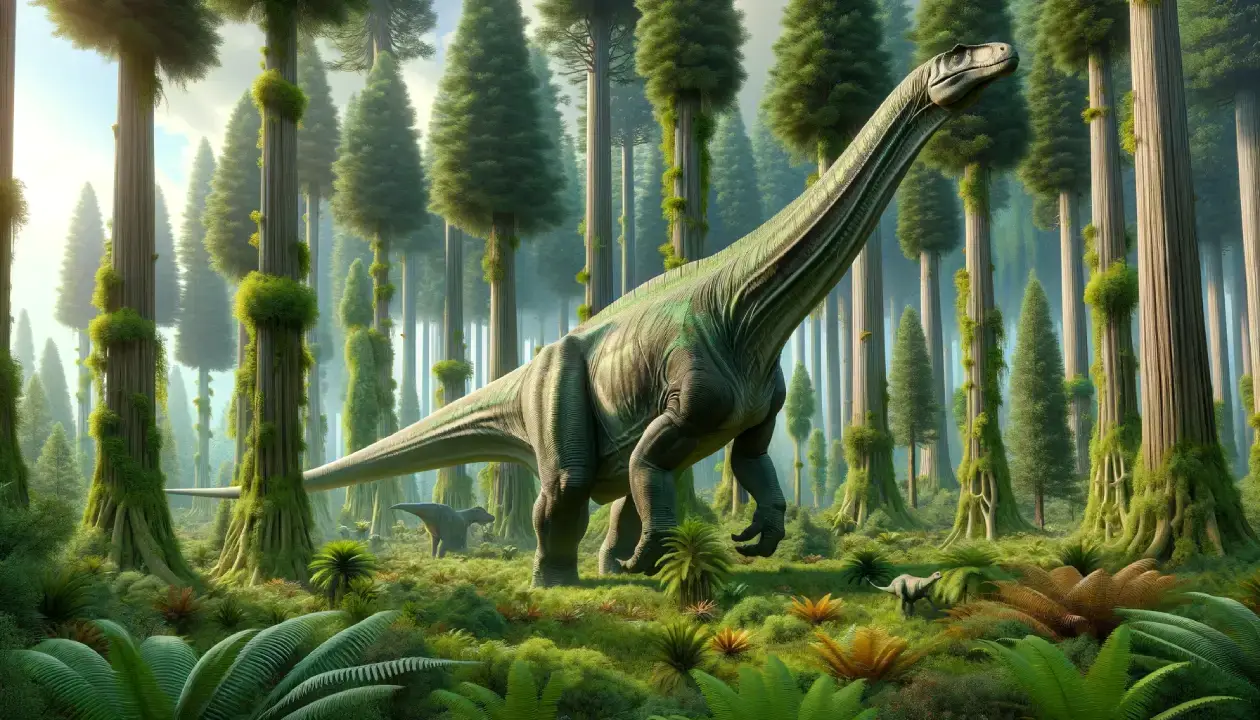Avaceratops was an early horned dinosaur that lived in what is now Montana, USA, during the Late Cretaceous period, about 77 million years ago. It was one of the first dinosaurs to be discovered in the Judith River Formation, a rich fossil site. Its name means “Ava’s horned face”, after the wife of the fossil collector who found it. It had a short frill without any openings and two long horns above its eyes, as well as a small nose horn. It was a quadrupedal herbivore that fed on low-growing plants.
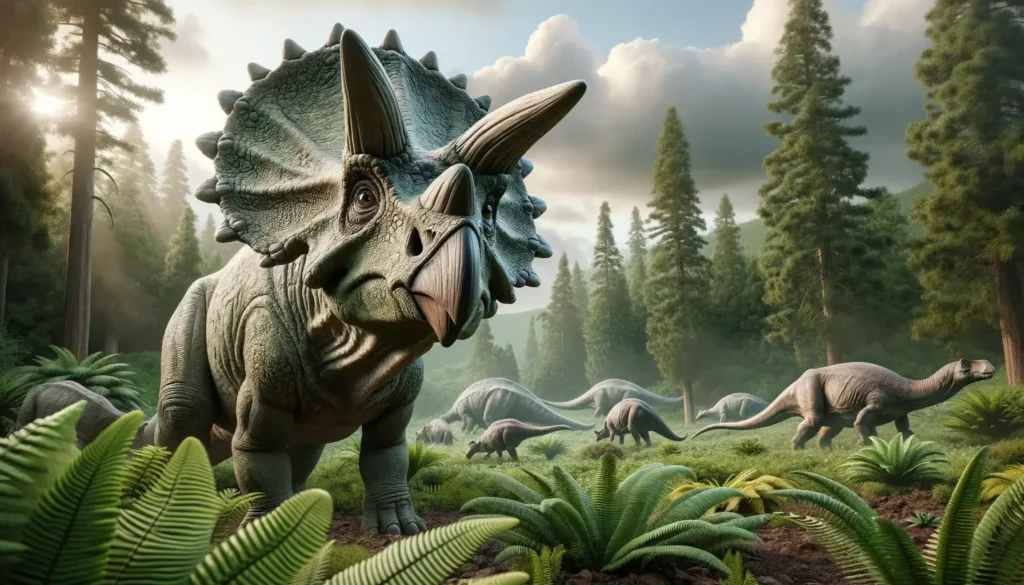
Basic Information
| Feature | Details |
| Time Period | Late Cretaceous (77 million years ago) |
| Diet | Herbivore |
| Length | 4-4.2 meters (13-14 feet) |
| Weight | 1.1 tons (2,204 pounds) |
| Size | Small |
| Posture | Bipedal |
| Locations | USA |
| Continent | North America |
| Type | Ceratopsians |
| Habitats | Grasslands, Floodplains |
Description of Avaceratops
Historical Context
Avaceratops was the first ceratopsid dinosaur to be discovered and named in the 20th century, in 1986 by Peter Dodson. It was found on a farm near the Judith River Formation of Montana, USA, by a fossil collector named Eddie Cole in 1981. He initially thought he had found some fossilized wood, but later realized it was a bone of a horned dinosaur. A scientific excavation of the site was conducted in 1985, yielding a partial skeleton that included the lower skull, a lower jaw, vertebrae, and parts of the limbs. Additional specimens include two squamosals and an upper skull from Montana and Utah. Avaceratops was one of the earliest members of the Centrosaurinae, a group of ceratopsid dinosaurs that had short frills and large nose horns.
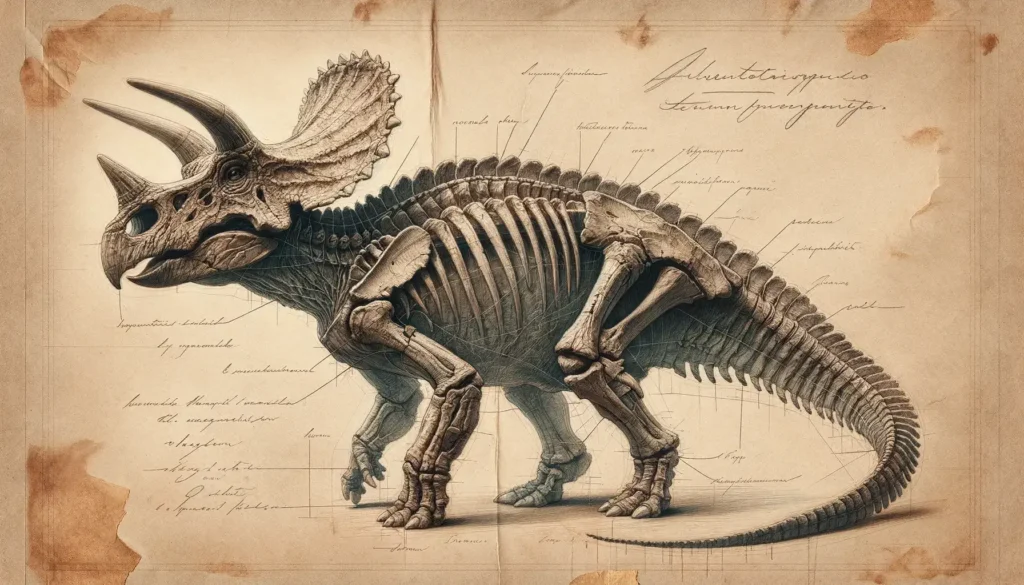
Physical Attributes
Avaceratops was a small herbivorous dinosaur that belonged to the group of ceratopsians, which were characterized by their beaked mouths and horned faces. Avaceratops had a low-slung body with short legs and a long tail. Its head was large and broad, with a long snout and a wide muzzle. Its teeth were peg-like and adapted for eating vegetation. Its most distinctive feature was its frill, which was located far behind the eyes and curved downward like a hook. The frill had two oval-shaped openings and was decorated with several osteoderms on each side. The rear edge of the frill was lightly scalloped. Avaceratops also had a pair of small horns over its eyes, as well as a large nose horn that pointed upward.
Feeding Habits
Avaceratops was a herbivore that fed on low-growing plants such as ferns, cycads, and horsetails. It had a broad muzzle that allowed it to take large bites of vegetation. It did not have complex teeth for chewing, so it swallowed its food whole or with minimal processing. It had a large gut that could digest tough plant matter with the help of symbiotic bacteria. Avaceratops may have used its frill to communicate with other members of its herd or to warn off predators.
Unique Features
Avaceratops had several unique features that distinguished it from other ceratopsians and dinosaurs. One of them was its size, which was smaller than most other centrosaurines. It reached a length of 4-4.2 meters (13-14 feet) and a weight of 1.1 tons (2,204 pounds). Another unique feature was its frill, which was different from the more elaborate frills of other centrosaurines. The frill of Avaceratops was simple and hooked, and did not extend over the eyes or the back of the head.
Movement and Speed
Avaceratops was not a fast or agile dinosaur. It walked on two legs and had a low center of gravity, which made it stable but also limited its mobility. It could not turn quickly or run for long distances. Its top speed has been estimated to be around 15 km/h (9 mph), similar to a human jogging pace. However, it could make sudden movements when necessary, such as raising its head or swinging its tail.
Cultural Impact
Avaceratops has been featured in some books, movies, games, and toys as a popular dinosaur. It is often portrayed as a gentle or friendly creature or as a loyal companion for human characters. Some examples of its appearances in popular culture are Dinosaur King (2007-2009), an anime series where it is one of the main characters’ dinosaurs, Jurassic World Evolution (2018), a video game where it is one of the unlockable dinosaurs , and Jurassic World: Epic Evolution (2024), a toy line where it is one of the featured dinosaurs .
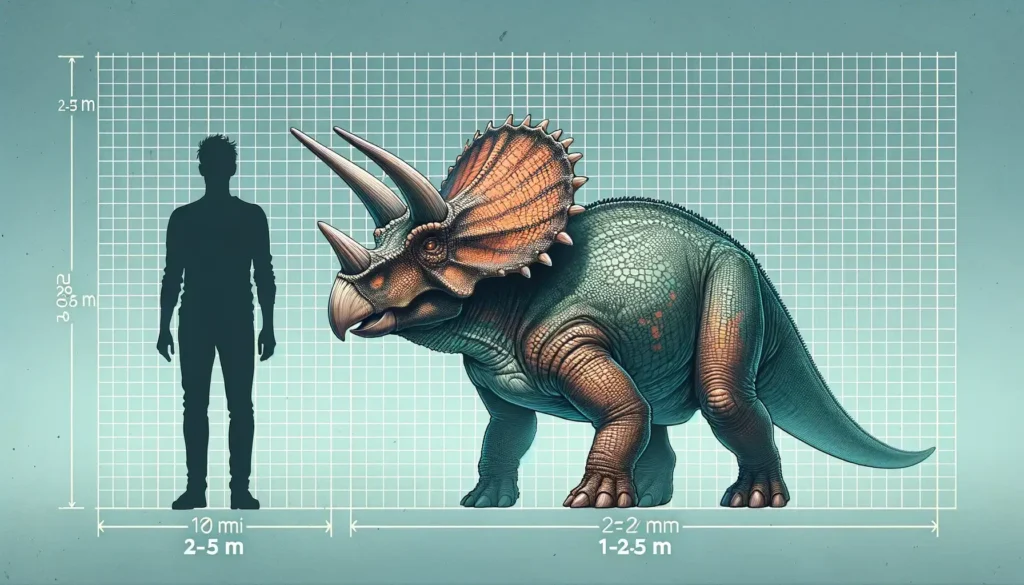
Interesting Facts
- Avaceratops was the first ceratopsid dinosaur to be discovered and named in the 20th century, in 1986.
- Avaceratops lived about 77 million years ago, during the late Campanian age, and are now known from fossils in the Judith River Formation of Montana and Utah.
- Avaceratops was one of the earliest members of the Centrosaurinae, a group of ceratopsid dinosaurs that had short frills and large nose horns.
- Avaceratops had a simple and hooked frill that curved downward like a hook.
- Avaceratops had a large nose horn that pointed upward, similar to those of Nasutoceratops and Einiosaurus.
Related Dinosaurs
- Nasutoceratops: A close relative of Avaceratops that had a longer frill and a larger nose horn that pointed sideways, and lived in Utah.
- Einiosaurus: Another close relative of Avaceratops that had a longer frill and a larger nose horn that curved forward like a can opener, and lived in Montana.
- Styracosaurus: A more distant relative of Avaceratops that had a longer frill and a larger nose horn that pointed upward, as well as six spikes on its frill, and lived in Canada.

